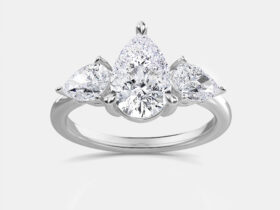
Concave mirrors, with their unique reflective properties, have captivated the curiosity of scientists and enthusiasts alike. In this exploration, we will delve into the fascinating world of concave mirrors, understanding their characteristics, applications, and the science behind their reflective wonders.
Understanding Concave Mirrors
Concave mirrors, also known as converging mirrors, curve inward. This curvature allows them to converge parallel rays of light towards a focal point, creating intriguing optical effects. Understanding the basic principles behind these mirrors is essential to unlocking their diverse applications.
Curvature and Focal Point
The concave mirror curvature is what sets it apart. The inner surface of the mirror is reflective, and as light rays strike it, they reflect inward, converging at a specific point known as the focal point. The distance from the mirror’s surface to the focal point is termed the focal length.
Types of Concave Mirrors
Concave mirrors come in different shapes and sizes, influencing their applications. Spherical concave mirrors, for instance, have a shape resembling a portion of a sphere. Parabolic concave mirrors, on the other hand, have a more complex shape, resembling a section of a parabola. Each type has unique optical characteristics.
Applications of Concave Mirrors
Concave mirrors find application in various fields, making them indispensable in our daily lives and scientific endeavors.
Optics and Imaging
One of the primary uses of concave mirrors is in optics and imaging. Cameras, telescopes, and binoculars often employ concave mirrors to focus light and produce clear, magnified images. The reflective nature of these mirrors enhances the efficiency of optical systems.
Medical Technologies
In the field of medicine, concave mirrors play a crucial role in diagnostic tools such as otoscopes and dental mirrors. The ability to focus light allows for detailed examinations and precise interventions, showcasing the versatility of concave mirrors in enhancing healthcare practices.
Solar Concentrators
Concave mirrors are also harnessed for harnessing solar energy. Solar concentrators use concave mirrors to focus sunlight onto a small area, thereby intensifying the heat for power generation or other industrial processes. This sustainable application showcases the potential of concave mirrors in the renewable energy sector.
Science Behind the Magic
Understanding the science behind concave mirrors adds another layer of appreciation for their optical prowess.
Reflection and Refraction
The magic begins with the principles of reflection and refraction. When light encounters a concave mirror, it reflects off its surface and converges at the focal point. The interaction of light rays with the mirror’s surface follows the laws of reflection and refraction, making it a captivating subject for scientific exploration.
Virtual Images and Magnification
Concave mirrors create virtual images that appear to be located behind the mirror. The size and characteristics of these images are determined by the mirror’s curvature and focal length. Exploring the concept of magnification allows us to understand how concave mirrors influence the visual perception of objects.
Conclusion
The world of concave mirrors is filled with wonders and applications that extend far beyond our everyday awareness. From enhancing medical diagnostics to harnessing solar energy, these mirrors continue to shape various industries. Understanding the science behind their reflective magic not only deepens our appreciation but also opens doors to further innovations in optics and beyond.







